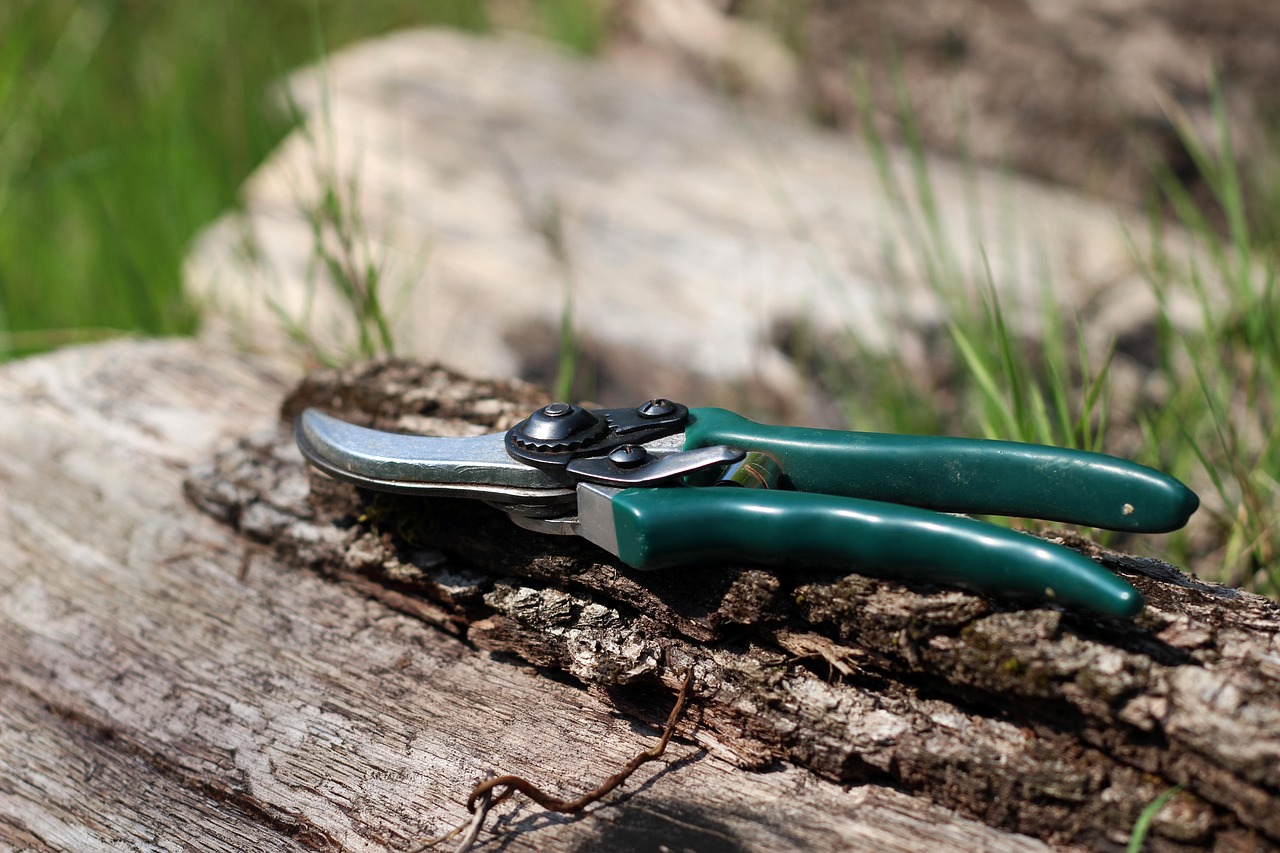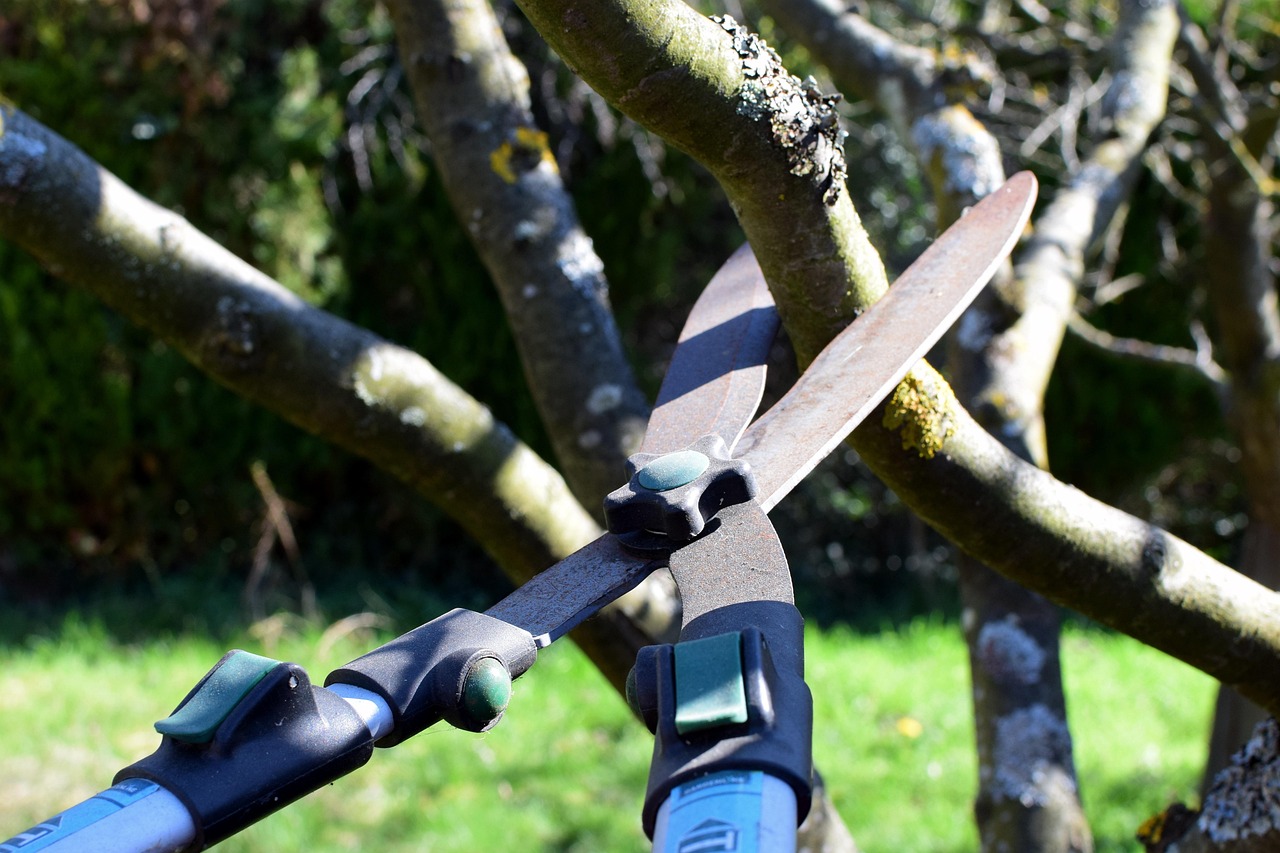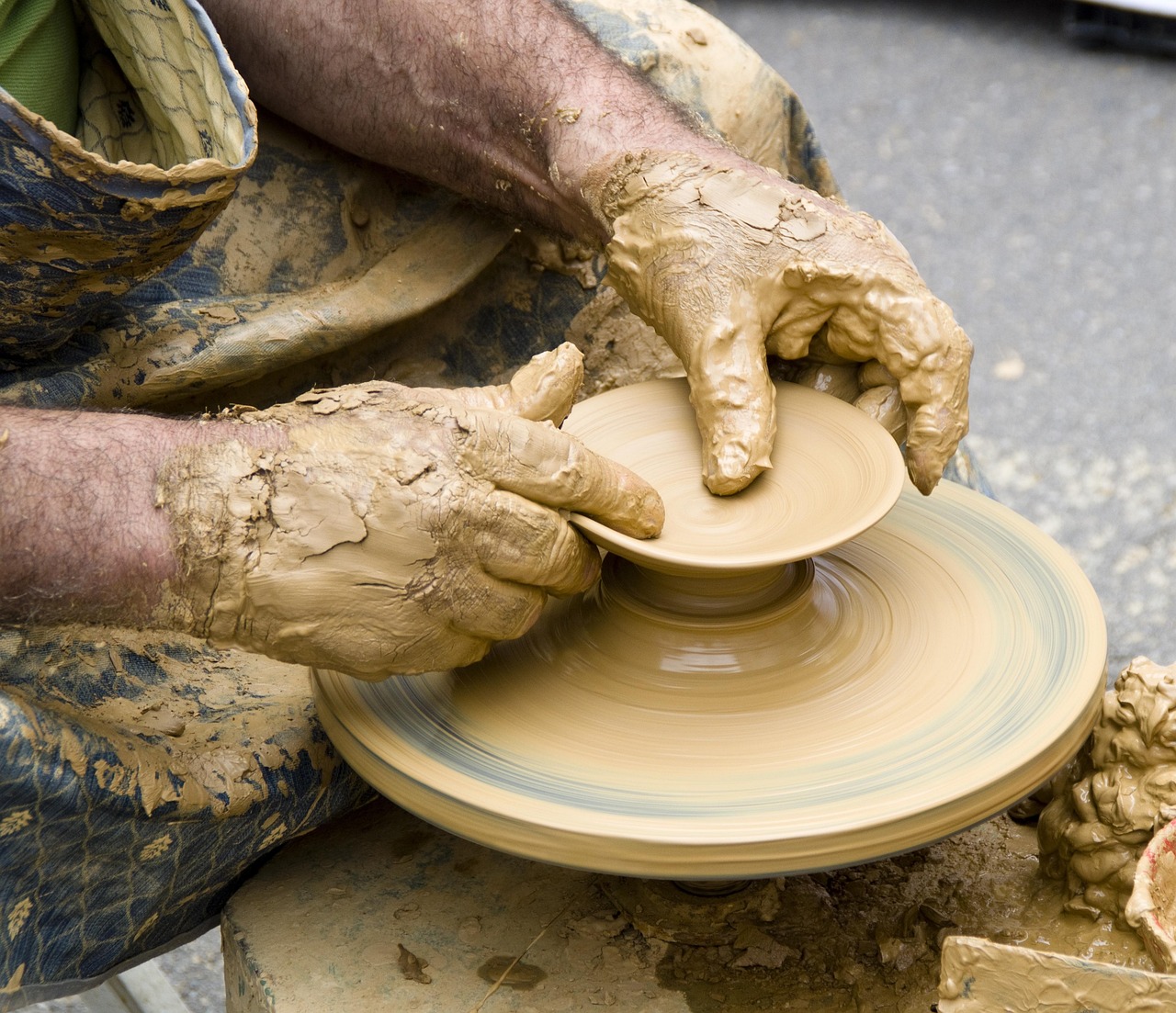Pruning shaded and low-light backyard trees requires careful techniques to maintain their health and appearance. Selective pruning enhances light penetration, promotes air circulation, and shapes the tree for better growth in challenging conditions.
Backyard trees often face various challenges due to competition with surrounding plants, structures, or even other trees for sunlight. Shaded and low-light environments can hinder their growth and vitality. As a result, proper pruning techniques become essential for these trees to thrive. Through effective pruning, you can not only improve the aesthetic appeal of your landscape but also ensure that your trees remain healthy and resilient.

Understanding the specific needs of trees in low-light conditions is crucial. Different species may respond differently to pruning. Some may need more aggressive cuts, while others might require a gentle touch. The timing of pruning also plays a significant role in the health of the tree. Typically, late winter or early spring is the best time to prune, as it allows the tree to heal quickly before the growing season begins.
Key Principles of Pruning
Before diving into specific techniques, it is essential to grasp the key principles of pruning. These principles guide you in making the right cuts that benefit your trees.
- Understand Tree Anatomy: Familiarize yourself with the parts of a tree, including branches, buds, and leaves. This knowledge helps in making informed pruning decisions.
- Assess Light Conditions: Identify how much light your trees receive. This assessment will inform your strategy for pruning.
- Use Clean Tools: Always use sharp and clean tools to make precise cuts and reduce the risk of disease.
- Make Cuts at an Angle: Cutting at a slight angle helps water runoff and prevents decay.
These principles set the foundation for effective pruning practices. By adhering to them, you can enhance the health and structure of your shaded trees.

Common Pruning Techniques
There are several techniques you can employ when pruning shaded and low-light trees. Each method has its specific applications and benefits, which can significantly improve tree health.
Thinning
Thinning involves removing select branches throughout the tree. This technique opens up the canopy, allowing more light to reach lower branches and foliage. Thinning encourages better air circulation and reduces the risk of disease by minimizing overcrowding.
Reduction
Reduction pruning involves shortening branches to reduce the overall size of the tree. This technique is helpful for trees that have grown too large for their space or are competing with nearby structures for light. By reducing height and spread, you can help these trees thrive in limited light conditions.

Cleaning
Cleaning focuses on removing dead, damaged, or diseased branches. This practice is vital for maintaining tree health. It allows remaining branches to receive more light and nutrients while also preventing potential infestations or diseases from spreading.
Timing Your Pruning
The timing of your pruning efforts can significantly influence their effectiveness. It is essential to consider the specific growth patterns of your trees. Most trees benefit from pruning during their dormant season, typically late winter or early spring.
The following table outlines the best times for pruning different types of trees commonly found in low-light backyards:

| Tree Type | Best Time to Prune | Notes |
|---|---|---|
| Deciduous Trees | Late Winter/Early Spring | Before new growth begins. |
| Evergreen Trees | Late Winter/Early Spring | Minimal pruning needed; focus on shaping. |
| Flowering Trees | After Blooming | Avoid spring pruning to protect buds. |
By following these guidelines, you can ensure that your shaded and low-light trees receive proper care through effective pruning techniques. This not only enhances their beauty but also promotes healthier growth in challenging environments.
As you continue learning about these techniques, remember that each tree is unique. Observing their growth patterns will help you make informed decisions about how and when to prune them effectively.
Tools and Equipment for Pruning
Having the right tools is essential for successful pruning. Using appropriate equipment not only makes the process easier but also ensures cleaner cuts, which promote better healing for the tree. Here are some commonly used tools for pruning shaded and low-light trees:
- Hand Pruners: Ideal for small branches and precise cuts. They are easy to handle and provide good leverage.
- Loppers: These are used for larger branches, typically up to two inches in diameter. They offer extended reach and more power.
- Pruning Saws: Best for thicker branches, a pruning saw provides greater cutting capacity. Choose a saw with a curved blade for improved maneuverability.
- Pole Pruner: Useful for high branches that are difficult to reach. This tool combines a saw and a pruner on a long pole.
- Protective Gear: Always wear gloves and safety glasses to protect yourself from sharp tools and falling debris.
Before starting your pruning, ensure that all tools are clean and sharp. This helps prevent the spread of diseases and makes the cutting process smoother.
Identifying Branches to Prune
Knowing which branches to prune is crucial for effective tree management. Not all branches need cutting, and selective pruning can lead to healthier trees. Here are some key factors to consider when identifying branches for pruning:
Dead or Diseased Branches
Look for branches that are dead, discolored, or show signs of decay. These branches can attract pests and diseases, impacting the overall tree health. Removing them promptly is essential.
Crossing or Rubbing Branches
Branches that cross each other or rub against one another can create wounds on the bark. This can lead to infections or structural weaknesses. It is advisable to remove one of each crossing pair to minimize damage.
Weak or Thinning Branches
Branches that appear weak or are thinning can be pruned to allow stronger branches to thrive. Focus on enhancing the overall structure of the tree by promoting healthy growth.
Pruning Techniques for Different Tree Species
Different species of trees may require tailored pruning techniques based on their growth habits and light requirements. Here are some specific methods suitable for various types of trees commonly found in shaded areas:
Deciduous Trees
Deciduous trees benefit from pruning techniques that promote canopy openness. Engage in thinning cuts to allow airflow and sunlight penetration. Focus on removing older wood to encourage new growth.
Evergreen Trees
For evergreen trees, light pruning is often sufficient. Shaping cuts can help maintain their form without removing too much foliage. Avoid excessive cuts that could expose inner foliage to direct sunlight, which may cause damage.
Flowering Trees
Flowering trees should be pruned after blooming. This timing helps preserve next year’s flower buds, ensuring a vibrant display in the following season. Remove spent flowers and thin out congested areas to promote better air circulation.
Aftercare Following Pruning
After pruning, proper care is essential to support the tree’s recovery and growth. Here are important aftercare practices:
- Watering: Ensure adequate moisture levels in the soil following pruning. This helps the tree recover from stress.
- Mulching: Apply mulch around the base of the tree to retain moisture and suppress weeds. Keep the mulch away from the trunk to prevent rot.
- Monitoring: Regularly check your trees for signs of stress or disease after pruning. Early detection is critical for maintaining tree health.
- Nutritional Support: Consider applying a balanced fertilizer if the tree shows signs of nutrient deficiency. This will support new growth and recovery.
Caring for your trees post-pruning not only aids in their recovery but also helps them flourish in low-light conditions.
The Role of Seasonality in Pruning
The seasons play a significant role in determining when and how to prune your trees effectively. Understanding seasonal changes can enhance your pruning strategy and ensure optimal results:
Spring
Spring is a time of growth for many trees. It is typically best for light maintenance pruning. Avoid heavy cuts during this season, as it can stress the tree during a vital growth phase.
Summer
Summer pruning can be beneficial for controlling growth and shaping the tree. However, be cautious not to prune too aggressively, as this may expose the tree to sunscald.
Autumn
Autumn is often considered a good time for certain types of trees, particularly those that have finished their growth cycle. It’s important to avoid late autumn pruning as it may encourage new growth that could be damaged by winter temperatures.
Winter
Winter is generally considered the best time for most pruning activities. Trees are dormant, allowing for easier cutting and minimal stress on the plant. Use this season to assess your trees and perform any necessary maintenance.
By understanding the seasonal dynamics of your backyard trees, you can optimize your pruning efforts and ensure their health in shaded conditions.
Common Mistakes to Avoid When Pruning
Pruning can significantly impact the health and appearance of shaded and low-light trees. However, certain mistakes can hinder their growth or even cause damage. Being aware of these common pitfalls will help you achieve better results when caring for your trees.
Over-Pruning
One of the most frequent mistakes is over-pruning. Removing too many branches can stress the tree and reduce its ability to photosynthesize. This is especially critical for trees in low-light environments where every leaf matters. Aim to prune selectively, focusing on the branches that need attention without removing large sections of foliage.
Improper Cutting Techniques
Using incorrect cutting techniques can lead to improper healing and potential disease entry points. Always make clean cuts, and avoid tearing the bark. Use the right tools for the job, and ensure they are sharp and well-maintained.
Ignoring Tree Species Needs
Each tree species has unique needs and growth patterns. Failing to consider species-specific requirements can lead to poor results. Research your tree varieties to understand their growth habits and optimal pruning methods.
Neglecting Tree Health
Before pruning, always assess the overall health of the tree. Ignoring signs of disease or pest infestations can worsen existing issues. If a tree shows signs of significant stress, consult an arborist before proceeding with any pruning.
Signs Your Trees Need Pruning
Recognizing when your trees require pruning is vital for maintaining their health and appearance. Here are some signs that indicate it may be time to prune:
- Excessive Growth: If the branches are overcrowded, it can hinder light penetration and airflow. Pruning can help alleviate this issue.
- Dead or Dying Branches: Any branches that appear lifeless or are not producing leaves should be removed promptly.
- Pest Infestation: If you notice pests on certain branches, pruning those areas can help control the infestation.
- Shape Issues: If a tree is growing unevenly or has an unbalanced shape, selective pruning can restore its symmetry.
- Blocked Pathways: Trees that grow too close to walkways or structures should be pruned to prevent damage and improve safety.
Pruning Techniques for Specific Situations
Certain scenarios may require specialized pruning techniques to address specific challenges that shaded trees face. Here are some techniques tailored for various situations:
Reducing Canopy Density
If a tree’s canopy becomes too dense, it can block light from lower branches, leading to poor growth. To reduce canopy density, employ a thinning technique by selectively removing branches. Focus on inner branches that compete for light, making sure to maintain a balanced structure.
Encouraging New Growth
To stimulate new growth in shaded areas, prune back older branches to make room for younger shoots. This technique encourages energy to focus on developing new leaves and branches, improving the overall vitality of the tree.
Maintaining Form in Youthful Trees
Younger trees benefit from formative pruning to establish a strong structure as they grow. This involves removing competing leaders and shaping the tree to promote an upright growth habit. Make cuts just above outward-facing buds to encourage side branching.
The Importance of Professional Help
While many homeowners can manage basic pruning tasks, certain situations may require the expertise of a professional arborist. Here are reasons to consider hiring a professional:
- Complex Tree Structures: Trees with complicated branching structures may need specialized knowledge for effective pruning.
- Health Issues: If a tree shows significant signs of disease or pest infestations, an arborist can assess the situation and recommend appropriate action.
- Safety Concerns: Trees near power lines or structures pose safety risks when pruned incorrectly. Professionals have the training and equipment needed for safe removal or trimming.
- Lack of Experience: If you are unsure about how to prune correctly, seeking help can prevent costly mistakes.
Additional Resources for Tree Care
For those interested in deepening their knowledge about tree care, various resources are available. Here are some helpful options:
- Local Extension Services: Many universities offer extension services that provide information on local tree care practices and species-specific guidance.
- Online Tutorials: Websites and YouTube channels dedicated to gardening often feature instructional videos on pruning techniques.
- Books on Arboriculture: Look for books written by certified arborists that cover comprehensive tree care topics, including pruning techniques tailored for specific types of trees.
- Workshops and Classes: Local gardening clubs or community centers may offer workshops on pruning and tree maintenance.
Engaging with these resources can enhance your understanding of tree care and help you develop effective skills for maintaining your shaded and low-light backyard trees.
Advanced Pruning Strategies
As you become more experienced with pruning shaded and low-light trees, you may want to explore advanced strategies that can further enhance their health and aesthetics. Here are some techniques that can be especially beneficial:
Training Young Trees
Training young trees involves guiding their growth to establish a strong structure from the beginning. This practice can prevent future issues related to weak branches or poor form. Techniques include:
- Leader Selection: Choose the strongest central leader and remove competing stems to encourage a single, upright trunk.
- Branch Spacing: Promote even spacing between branches to ensure adequate light penetration and airflow.
- Formative Pruning: Regularly prune during the growing season to shape the tree and remove any undesirable growth.
Seasonal Pruning Adjustments
As you gain confidence in your pruning skills, consider adjusting your techniques based on seasonal changes. For instance, in spring, focus on minor adjustments, while summer can be used for corrective pruning. Winter should be reserved for more extensive renovations, as trees are dormant and can better handle significant cuts.
Using Growth Regulators
In some cases, applying growth regulators can help manage tree growth. These chemicals can slow down excessive growth and reduce the frequency of pruning needed. Consult with a professional before considering this option, as misuse can harm the tree.
Creating a Pruning Schedule
Establishing a pruning schedule tailored to your specific trees can greatly improve their health and performance. Here are steps to create an effective pruning calendar:
- Assess Your Trees: Take note of each tree’s health, growth patterns, and specific needs.
- Determine Pruning Times: Based on the species and seasonal recommendations, decide when to prune each tree.
- Set Reminders: Use a calendar or app to set reminders for your pruning tasks to ensure timely maintenance.
- Document Changes: Keep records of what you pruned and any observed changes in tree health or growth patterns over time.
This proactive approach will help you stay organized and ensure that your trees receive consistent care throughout the year.
Cultivating a Healthy Environment
The success of your pruning efforts is also influenced by the environment surrounding your trees. Here are some practices to cultivate a healthy environment for shaded and low-light trees:
- Soil Health: Regularly test your soil and amend it with organic matter to ensure proper nutrient availability. Healthy soil supports robust tree growth.
- Water Management: Ensure consistent watering, particularly during dry spells. Mulching can help retain soil moisture and regulate temperature.
- Pest Control: Monitor for pests regularly and implement integrated pest management (IPM) strategies to minimize infestations without harming beneficial insects.
- Companion Planting: Consider planting compatible species nearby that can provide nutrients or enhance soil health without competing for light.
A well-maintained environment complements your pruning efforts and leads to healthier, more resilient trees.
Final Thoughts
Caring for shaded and low-light backyard trees through proper pruning techniques is crucial for their vitality and longevity. By understanding the unique needs of these trees and employing effective strategies, you can promote healthy growth even in challenging conditions. Remember that patience is key; trees take time to respond to pruning interventions.
Utilize the tools and techniques discussed throughout this article to enhance your tree care practices. Whether you are a novice gardener or a seasoned horticulturist, there is always more to learn about effectively managing tree health. Stay informed by accessing resources, attending workshops, and engaging with local experts.
Your commitment to understanding and nurturing your trees will not only beautify your backyard but also contribute positively to the local ecosystem. With mindful pruning and care, your shaded trees can thrive, providing shelter, beauty, and enjoyment for many years to come.
By implementing these techniques, you are not just maintaining your trees; you are fostering a flourishing landscape that benefits both nature and your home environment. Happy pruning!
